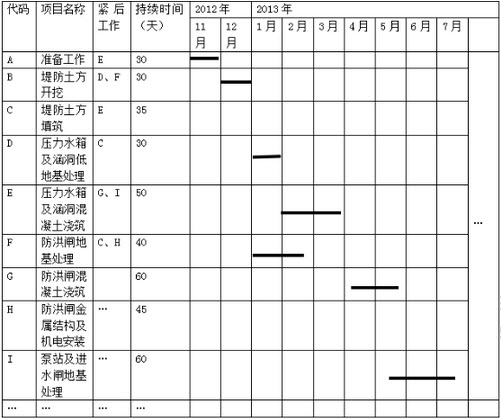问题
问答题
背景资料:
某新建泵站采用堤后式布置,主要工程内容包括:泵房、进水闸、防洪闸、压力水箱和穿堤涵洞。工程所在地的主汛期为6月-9月。合同双方依据《水利水电工程标准施工招标文件》(2009年版)签订了施工合同。合同部分内容如下:(1)合同工期18个月,工程计划2012年11月1日开工,2014年4月30日完工;(2)签约合同价为810万元;(3)工程质量保证金为签约合同价的5%。
施工中发生如下事件:
事件1:根据施工方案及安全度讯要求,
承包人编制了进度计划,并获得监理人批准。其部分进度计划见表1(不考虑前后工作的搭接,每月按30天计)
表1工程项目施工进度计划表(部分)

事件2:为加强项目部管理,承包人提出更换项目经理并按合同约定的要求履行了相关手续。承包人于2013年2月25日更换了项目经理。
事件3:由发包人组织采购的水泵机组运抵现场,承包人直接与供货方办理了交货验收手续,并将随同的备品条件、专用工器具与资料清点后封存,在泵站安装时,承包人自行启用一封存的专用工器具。
事件4:合同工程完工证书颁发时间为2014年7月10日。承包人在收到合同工程完工证书后,向监理人提交了包括变更及索赔金额、工程预付款扣回等内容的完工付款申请单。
事件4中,承包人向监理人提交的完工付款申请单还应包括哪些主要内容。
答案
参考答案:
还应包括以下资料:
(1)完工结算合同总价;
(2)发包人已支付承包人的工程价款;
(3)应扣留的质量保证金;
(4)应支付的完工付款金额。
